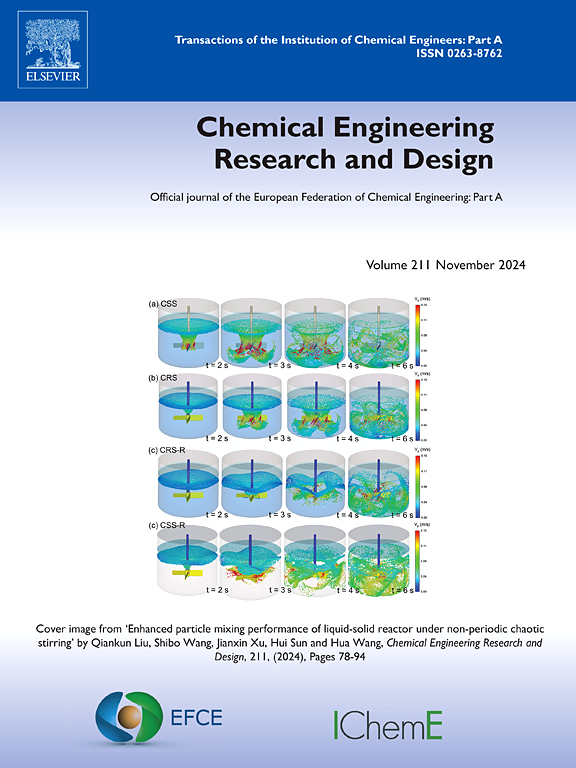Studies on the physical properties of the Three-Liquid-Phase System of n-Hexane-ethanol-NaH2PO4-water
IF 3.7
3区 工程技术
Q2 ENGINEERING, CHEMICAL
引用次数: 0
Abstract
The physical properties, density, viscosity, and refractive index of equilibrated phases of the Three-Liquid-Phase System (TLPS) formed by n-Hexane+ethanol+sodium dihydrogen phosphate (NaH2PO4) +water were determined at 303.15 K and analysed as a function of change in concentration of individual phase forming components. The ternary plots were plotted to locate the shift in three-phase region with variation in system components. It was observed that the increase in total concentration of both ethanol and NaH2PO4 in a system showed a reduction of density and viscosity in the middle phase and was found to increase in the top and bottom phases; however, the refractive index of all three phases was increased. The effect of change in concentration of n-Hexane was observed to be different, like the density and viscosity of top and middle phases were found to decrease with increasing concentration of n-Hexane, and both the properties were found to increase in the bottom phase. In contrast, the refractive index of the top and bottom phases decreased with increasing concentration of n-Hexane. The influence of tie line lengths (TLL), which indicates the equilibrium characteristics between the phases, on the interfacial tension between the phases was also studied.
求助全文
约1分钟内获得全文
求助全文
来源期刊

Chemical Engineering Research & Design
工程技术-工程:化工
CiteScore
6.10
自引率
7.70%
发文量
623
审稿时长
42 days
期刊介绍:
ChERD aims to be the principal international journal for publication of high quality, original papers in chemical engineering.
Papers showing how research results can be used in chemical engineering design, and accounts of experimental or theoretical research work bringing new perspectives to established principles, highlighting unsolved problems or indicating directions for future research, are particularly welcome. Contributions that deal with new developments in plant or processes and that can be given quantitative expression are encouraged. The journal is especially interested in papers that extend the boundaries of traditional chemical engineering.
 求助内容:
求助内容: 应助结果提醒方式:
应助结果提醒方式:


